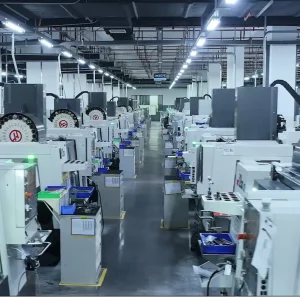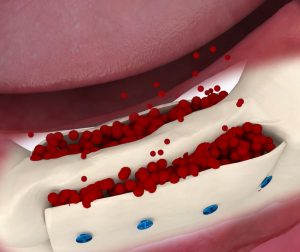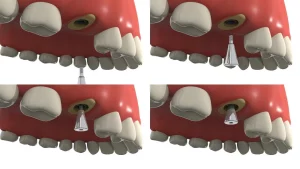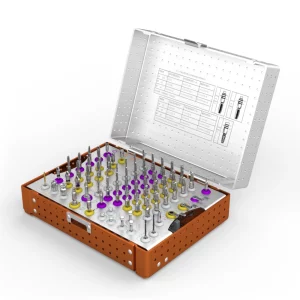In the field of dental implants, the success of patient treatment highly depends on a deep understanding of impression techniques, particularly the ability to accurately assess and apply each method. Implant impressions are primarily categorized into two types: open-tray impressions and closed-tray impressions.
Both closed-tray and open-tray techniques have their unique advantages and limitations. Gaining a thorough understanding of these subtle differences is crucial, as different clinical situations often require specific impression techniques rather than arbitrary choices.
Obtaining an accurate impression from the start not only helps avoid the frustration of remakes due to poor impression quality but also empowers clinicians to provide exceptional care with greater confidence.
Dental Impression Techniques
When restorative dentists undertake the critical task of creating the final impression, they are faced with an essential decision: selecting the most appropriate method for this crucial step.
To ensure precision and accuracy, the choice between a closed tray impression or an open tray impression may become the preferred, or even indispensable, option in some cases. This is because obtaining accurate implant impression data plays a pivotal role in the overall success of the implant procedure.
What is an open tray impression?
An open tray impression is a specialized technique for capturing an accurate impression of the implant and surrounding tissue by securing an impression coping on the implant and extending a fixation screw through the tray into the impression material.

Procedure:
- Preparation Stage: First, the doctor installs an impression coping onto the implant, ensuring it fits securely to guarantee impression accuracy.
- Tray Selection and Placement: Next, the doctor selects a suitable tray based on the patient’s oral condition and places it in the patient’s mouth, ensuring close contact with the implant and surrounding tissue.
- Screw Fixation: The doctor then passes the fixation screw through the tray via an opening, embedding it into the impression material to firmly connect the tray to the implant, preventing movement or deformation during the impression process.
- Impression Material Injection: After securing the tray, the doctor injects the impression material into the tray, ensuring full coverage of the implant and surrounding tissue.
- Waiting for Curing: The impression material requires time to cure. The patient must keep their mouth open until the material solidifies completely.
- Impression Removal: Once the material has cured, the doctor unscrews the impression coping through the tray opening and carefully removes the tray and impression from the patient’s mouth.
Features and Advantages:
- High Precision: The design of the fixation screw and impression coping ensures the accuracy of the impression, providing a reliable foundation for subsequent restoration work.
- Versatility: Open tray impressions are suitable for a range of complex oral conditions, particularly when the implant’s position, direction, and angle are challenging.
- Ease of Use: Although this technique requires some skill and experience, it is relatively straightforward and easy to master compared to other impression methods.
Środki ostrożności:
- Tray Selection: The doctor must consider the patient’s oral condition, implant position, and direction to ensure the tray fits the patient’s mouth perfectly.
- Control of Impression Material: The doctor must control the amount of impression material injected to ensure it fully covers the implant and surrounding tissue without waste or overflow.
- Patient Comfort: During the curing process, the patient must keep their mouth open, which may cause discomfort or fatigue. The doctor should communicate this in advance and offer reassurance during the procedure.
What is a closed tray impression?
The closed tray impression technique involves using a completely enclosed tray to capture the impression, with the edges of the tray making close contact with the soft tissues of the oral cavity, thus forming a sealed impression space. Impression material is injected into this space, and once it has cured, the entire tray and impression are removed from the mouth.
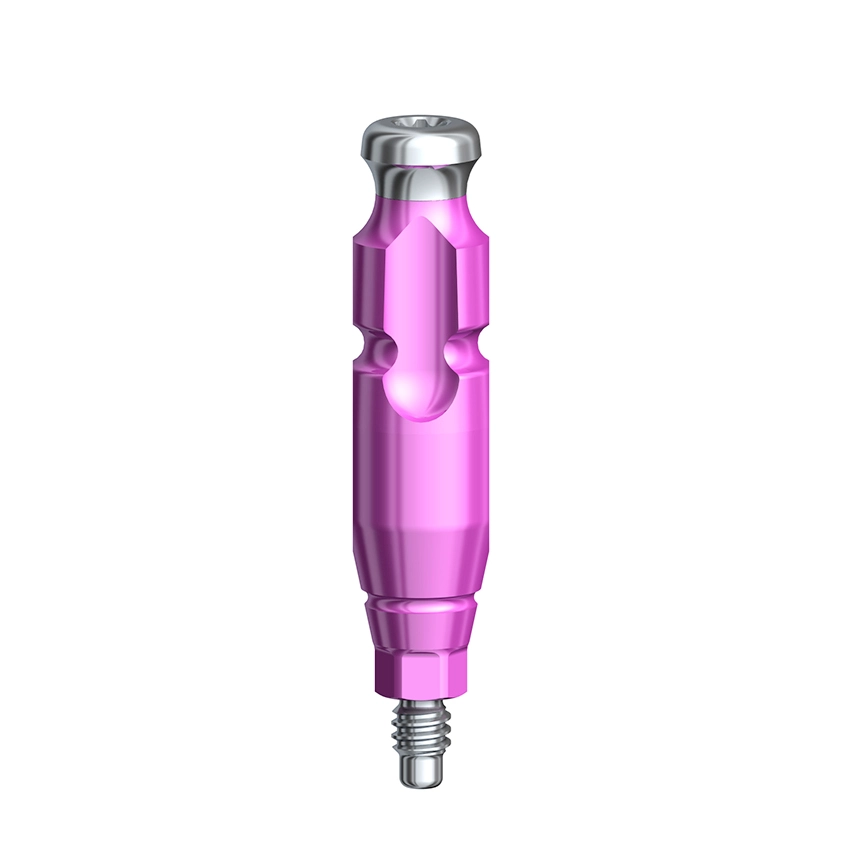
Procedure:
- Preparation Stage: The doctor will install a transfer coping or impression cap on the implant to ensure that the impression material accurately replicates the position and shape of the implant.
- Tray Selection and Placement: Based on the patient’s oral condition and the position of the implant, the doctor selects an appropriately sized closed tray and places it in the patient’s mouth, ensuring that the tray edges are in close contact with the soft tissues.
- Impression Material Injection: Once the tray is correctly positioned, the doctor injects an adequate amount of impression material into the tray to ensure complete coverage of the implant and surrounding tissue.
- Waiting for Curing: The impression material requires a certain amount of time to cure, during which the doctor will ask the patient to keep their mouth open until the material has fully solidified.
- Removal of Tray and Impression: After the impression material has cured, the doctor will remove the entire tray and impression from the patient’s mouth.
Features and Advantages:
- High Precision: The close contact between the tray edges and the oral soft tissues creates a sealed impression space, ensuring the accuracy of the impression.
- Ease of Use: Compared to other impression techniques, the closed tray method is relatively simple to operate and easy to master.
- Reduced Error: The enclosed nature of the tray helps avoid errors caused by patient movement or talking during the impression process.
Środki ostrożności:
- Choosing the Right Tray: The doctor must consider the patient’s oral condition, the position and direction of the implant, and other factors when selecting a tray to ensure a perfect fit in the patient’s mouth.
- Controlling the Amount of Impression Material: When injecting the impression material, the doctor must control the amount injected to ensure full coverage of the implant and surrounding tissue while avoiding waste and overflow.
- Maintaining an Open Mouth: During the curing of the impression material, the patient needs to keep their mouth open, which may cause some discomfort and fatigue. Therefore, the doctor should communicate this clearly to the patient beforehand and provide appropriate psychological support and reassurance during the procedure.
Closed Tray Impression vs. Open Tray Impression
When choosing between closed-tray impressions and open-tray impressions, it’s essential to consider the patient’s specific situation, surgical needs, and the clinician’s experience and skills. Here are some selection suggestions:
- When to Choose Closed Tray Impression
Relatively Simple Oral Structure: If the patient’s oral structure is straightforward, without complex anatomical features or pathological changes, a closed tray impression may be a better choice. It provides a relatively enclosed and stable impression environment, ensuring precision and accuracy. - Concentrated Implant Location: When the implants are located in a concentrated area of the mouth, closed tray impressions can more easily cover all implants and reduce errors caused by patient movement or speaking.
- Reducing Patient Discomfort: Closed tray impressions usually offer a better seal, minimizing the flow and overflow of impression materials in the mouth, thereby reducing patient discomfort.
- When to Choose Open Tray Impression
Complex Oral Structure: For patients with complex oral structures, scattered implant locations, or pathological changes, open tray impressions may be more suitable. This method allows doctors to make flexible adjustments when necessary, ensuring the accuracy and completeness of the impression. - Need for Greater Precision: In certain cases, such as when high-precision restorations are required, open tray impressions may provide better accuracy. They enable doctors to perform more delicate operations during the impression process to capture subtle changes in the implant and surrounding tissue.
- Experienced Clinicians: Experienced doctors may be more proficient in using open-tray impression technology. They can flexibly adjust the position and angle of the tray to achieve the best impression effect based on the patient’s specific situation and surgical needs.
Comprehensive Considerations
When choosing between closed tray and open tray impressions, the following factors should also be comprehensively considered:
- Performance of Impression Materials: Differences in the performance of various impression materials may affect the accuracy and stability of the impression. Therefore, when selecting the type of tray, the characteristics and performance of the impression material must be considered.
- Operation Time and Cost: There may be differences in operational time and cost between closed tray and open tray impressions. Doctors need to weigh the operation time, cost, and the precision and accuracy of the impression according to the patient’s specific situation and surgical needs.
- Patient Preference and Comfort: Patient preference and comfort are also crucial factors when selecting the type of tray. Doctors should communicate fully with patients to understand their needs and expectations, ensuring that the selected tray type meets the patient’s expectations and enhances the success rate of the procedure.
Dental Implant Impression Materials
Among dental implant impression materials, the most commonly used types include the following categories:
Alginate Impression Materials
Alginate impression materials are elastic, irreversible materials that have been used in oral clinical restoration since the mid-20th century. Their advantages include low cost, ease of use, and high biocompatibility, making them widely used in clinical practice. However, their main disadvantage is significant shrinkage, which may prevent them from accurately reflecting the state of the teeth. For implant restorations that require high-precision impressions, alginate may not be the best choice.
Silicone Rubber Impression Materials
Silicone rubber is a type of synthetic polymer rubber. As an impression material, it offers advantages such as high strength, good elasticity and fluidity, excellent plasticity, dimensional stability, high precision, and stable chemical properties. Currently, silicone rubber is considered the most ideal type of impression material. Silicone rubber impression materials are categorized into condensation-polymer silicone rubber, addition-polymer silicone rubber, and polyether rubber. Among these, addition-polymer silicone rubber (type A silicone rubber) has a higher ultimate hardness, making it suitable for dental implant impressions.
Polyether Impression Materials
Polyether impression materials also possess high ultimate hardness and are widely used in clinical practice. They can meet the requirements for implant dentures regarding morphological stability, elastic recovery rate, and biocompatibility while emphasizing the importance of ultimate hardness in impression materials. Therefore, they are suitable for making implant impressions.
Other Impression Materials
In addition to the aforementioned common impression materials, there are other types, such as agar impression materials; however, these are relatively rarely used for implant impressions.
Wnioski
When choosing between closed-tray and open-tray impressions, consider the patient’s specific circumstances, surgical needs, and the clinician’s experience and skills. Closed-tray impressions may be more appropriate for patients with simple oral anatomy, centralized implant locations, and less patient discomfort. Open-tray impressions may be more appropriate for patients with complex oral anatomy, decentralized implant locations, or pathology. Open-tray impressions can provide better accuracy in high-precision restorations. An accurate impression from the outset helps avoid retakes due to poor impression quality and allows clinicians to provide superior care with greater confidence.

